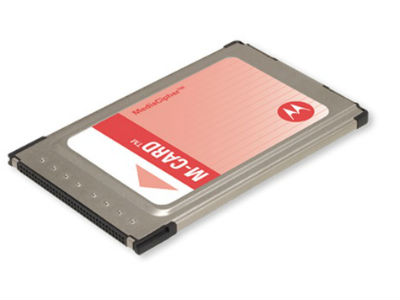FCC Group Presents Multiple Post-CableCARD Paths

As expected, an FCC-appointed committee on Friday presented the Commission with multiple paths toward a post-CableCARD world for retail video devices, including downloadable video security options that would allow for competitive user interfaces.
Formed in January, the Downloadable Security Technology Advisory Committee (DSTAC) provided its recommendations to the FCC a week ahead of a September 4 deadline. The DSTAC came together following the passing of the STELAR Act, legislation that will sunset the current set-top security integration ban in December 2015 and called on the FCC to take a look at a successor approach that could spur the retail market for video navigation devices for not just cable operators, but other MVPDs.
The CableCARD regime has failed miserably with respect to sparking a robust market for cable-ready retail devices. The NCTA, in its last report to the FCC on the matter, said the top nine incumbent U.S. cable operators had deployed about 53 million CableCARDs in MSO-supplied set-tops since ban on integrated security took effect in July 2007, versus 617,000 CableCARD modules that were deployed in TiVo boxes, TVs and other retail products with CableCARD slots.
For the DSTAC, the big trick is to provide recommendations that could achieve a downloadable, platform-neutral system without being “unduly burdensome” while also applying to MVPDs that use a wide range of access technologies and proprietary video security and conditional access systems.
The DSTAC report, at six pages, has yet to be released (the FCC did not announce when it would make them public), but two members of the committee – Jay Rolls, SVP and CTO of Charter Communications; and Milo Medin, VP of access services at Google, provided a summarized view of the group's findings.
While the final recommendations offer multiple paths that could be mixed and matched to achieve the goals of the initiative, Rolls said the DSTAC did find agreement on several points. For example, the group recognized that MVPD networks are diverse and varied. “We all agree that you don’t want to overhaul those networks just to accommodate a brand new security system.”
He also said the proposals also did not recommend a solution based on “common reliance,” which is a concept whereby operator-supplied equipment uses the same security system as retail devices to receive MVPD services. “That was deemed not to be necessary,” Rolls said.
Multichannel Newsletter
The smarter way to stay on top of the multichannel video marketplace. Sign up below.
The DSTAC also agreed that its recommendations should center around IP protocol, whether delivered from the MVPD or by a product in the home, and that the MVPD must retain control of the downloadable element. “Security is a very sensitive topic and needs to be very tightly controlled,” he said.
On the security end, there were two proposals – one that relies on HTML-5 security APIs and associated encrypted media extensions for distribution in the home and via the cloud, and a “virtual headend” approach whereby the network security and condition access is handled in the cloud with interfaces between the operator and the device using protection such as DTCP-IP.
The scope of DSTAC’s work also was not unified, as it spanned multiple non-security and control plane components.
A proposed app-based approach would retain the MVPD’s user interface as services are made available on IP-connected retail devices such as gaming consoles, tablets and PCs. MVPDs use or plan to use various methods for that, including DLNA’s VidiPath approach that is resonating with cable operators, RVU (in use by DirecTV), and the technology Dish Network is using for its Virtual Joey app.
Another approach factors in competitive navigation/UIs that empower CE companies, such as TiVo, to create and implement their own guides. That work focused on three primary interfaces – service discovery, entitlement information (content a consumer has rights to access); and content delivery (whether it allows for live TV, on demand or cloud DVR streams, or a mix of them). The approach also factors in different DRM approaches and the transfer of metadata to deliver navigation/interfaces that consumers can digest, Medin explained.
The DSTAC suggests that the different proposals could be combined in different ways to achieve the goals of creating a vibrant market for retail video devices that can support MVPD services.
Rolls called the DSTAC exercise “truly a team effort,” while acknowledging that the recommendations were not finalized without some lively discussion. “We weren’t clawing each other’s eyes out. It was a very civil debate,” he said.
“Engineers are very good at solving problems but the definition of the problem matters a whole lot,” Medin said.
Next steps will include the publishing of the report itself. The FCC has not said how it might act on the DSTAC proposals, and if the Commission might follow with a Notice of Inquiry or a full Notice of Proposed Rulemaking.
If the FCC moves ahead on a rulemaking, Evolution Digital, a supplier of set-tops and video software mostly to tier 2/3 MVPDs, suggested in a letter to the FCC on August 21 that the Commission should exempt small operators as such rules could be “unduly burdensome” from a financial and engineering perspective partly because it would force them to embark on IP video transitions prematurely.
